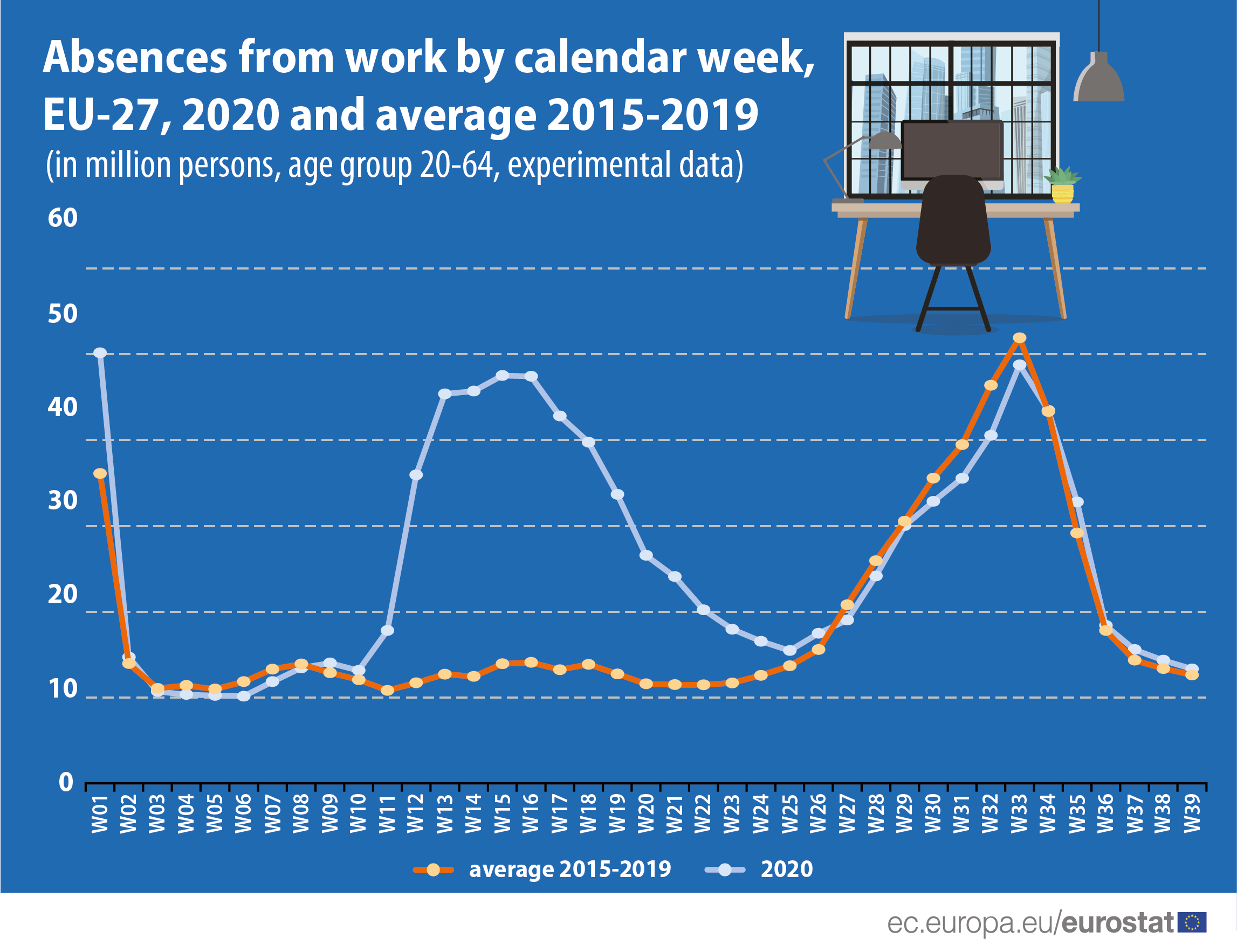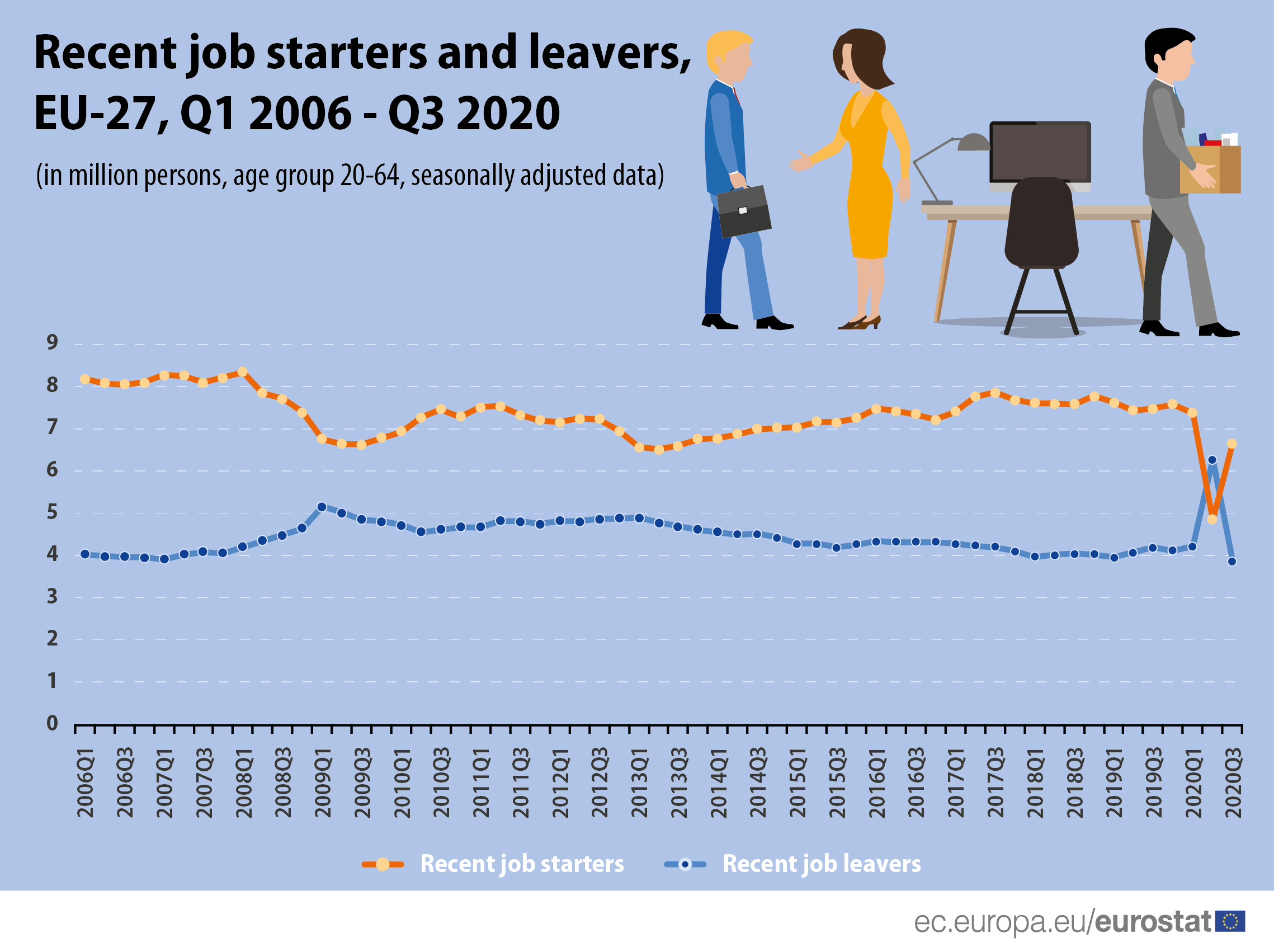The worldwide COVID-19 pandemic strongly affected social life, the economy and the labour market in 2020. To prevent the spread of the virus, a range of social distancing measures were implemented by governments across the EU, including temporarily shutting down many businesses and confining people to their homes. The resulting slow-down in business activities resulted in, among others, redundancies and furloughing, reduced working hours and suspended hiring.
In the EU, usual seasonal peaks in absences from work due to holiday seasons were recorded in early January and mid-August 2020. However, exceptionally many absences were recorded throughout weeks 11 to 24 (roughly corresponding to the second quarter of 2020), during the 'first wave' of the COVID-19 pandemic. The peak was recorded in week 15 (in April 2020), with 47.5 million absences. This was 33.6 million more than the average recorded during this calendar week in the past five years (2015-2019).
Source dataset: lfsi_abs_w
From the first quarter of 2006 to the third quarter of 2020, recent job starters consistently outnumbered recent job leavers in the EU. The only exception was during the second quarter of 2020 (Q2 2020), during the 'first wave' of the COVID-19 pandemic. During this quarter, the number of recent job leavers peaked at 6.3 million, while the number of job starters fell to 4.8 million.
In the third quarter of 2020 (Q3 2020), the number of recent job starters again rose above that of job leavers. The number of recent job leavers fell to a historic low of 3.9 million. At the same time, the number of recent job starters rebounded to 6.6 million. This was substantially higher than in the second quarter of 2020, but still below the levels recorded in the period from Q4 2013 to Q1 2020. The number of newly employed in Q3 2020 was close to the levels recorded during the financial recession in the late 2000s.
Source datasets: lfsi_sta_q and lfsi_lea_q
In line with these developments, there have also been substantial changes in the hours worked by people in different occupations. Workers in elementary occupations had the largest drop in the volume of working hours (index corrected for employment) between the third quarter of 2019 and the third quarter of 2020, with working hours falling by -10.1%. This group covers people performing simple and routine tasks, which may require the use of hand-held tools and considerable physical effort.
The volume of working hours also decreased considerably for managers and for service and sales workers. For both groups, the volume of actual working hours dropped by -7.7% from Q3 2019 to Q3 2020. In contrast, over the same period the working hours for professionals (including health workers) and for clerical support workers increased at EU level, by +3.4% and +1.6% respectively.
For more information, take a look at the online publication Labour market in the light of the COVID 19 pandemic - quarterly statistics, in particular the articles Weekly absences from work, Recent job starters and leavers - quarterly statistics and Hours of work in detail - quarterly statistics. Also, to know more about the quality of these data, please have a look at Sample_size and non-response – quarterly statistics.
For further information on the occupations, see the ISCO-08 classification.
Note: The European Union (EU) includes 27 EU Member States. The United Kingdom left the European Union on 31 January 2020. Further information is published here.
To contact us, please visit our User Support page.
For press queries, please contact our Media Support.


